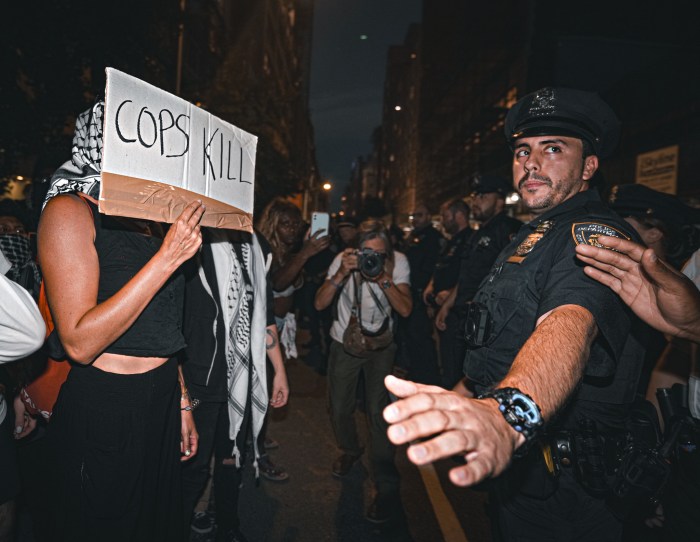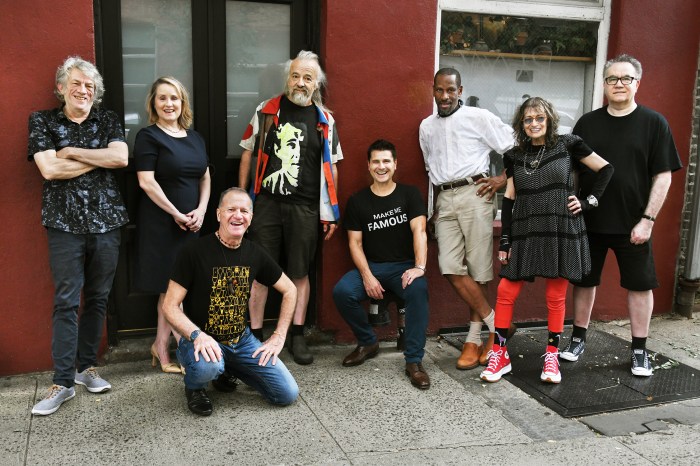By Lincoln Anderson
Following its aborted process to redevelop Pier 40 three years ago, the Hudson River Park Trust is currently circulating a draft request for proposals for the 14-acre pier, soliciting feedback from Community Board 2 members and the Hudson River Park Trust Advisory Council.
The Villager obtained a copy of the draft R.F.P., which has blanks left in it for the date of a prebid meeting and the deadline for submissions. Under the 1998 Hudson River Park Act, the massive W. Houston St. pier — which opened in 1962 and saw passenger ship service end at it in the late 1960s — is to be redeveloped with 50 percent park space and 50 percent commercial space, and is supposed to be a revenue-generating hub for the self-financing, 5-mile-long park.
The Trust is offering a long-term, 30-year lease, with the option of a 49-year lease — though the latter would require a change of the park act by the State Legislature.
Arthur Schwartz, C.B. 2 Waterfront and Parks Committee chairperson, said he was struck by three things in particular in the R.F.P.: the statement that the Trust “considers ‘big box’ retail development at Pier 40 as incompatible with park uses;” that preference will be given to plans that retain the ground-floor athletic field in the pier’s courtyard; and that any uses should at least equal the $5 million in annual revenue that long-term parking on the pier currently generates for the Trust.
Schwartz said he thinks the consensus is that the pier, as it is right now, is pretty much what the community wants. The courtyard field was added under an interim plan after the last R.F.P. process crashed in 2003, but Schwartz says many community members now think it should be the de facto final plan. Roofing over the pier’s courtyard, once considered a way to maximize field space, would now be considered a detriment since it would take the existing fields — heavily used, especially by youth sports leagues — out of commission for a while.
“I think the goal is to make it the least disruptive as possible,” Schwartz said, “because it’s become a pretty important facility.” Replacing the parking with another use would also be unpopular, he said, noting, “It’s a very important parking facility for the community. My hope is it stays — maintaining parking and ball fields and not much more.” Yet, at the same time, Schwartz said he understands that the Trust is putting out the R.F.P. because it needs repairs made to the pier’s superstructure. The pier is being offered as-is, and any developer chosen would be responsible for all ongoing maintenance and repair of the pier.
Three years ago, Schwartz and some others on C.B. 2, as well as many of the local politicians, backed a plan for Pier 40 by C&K/Durst that would have included a big-box store, which they were willing to accept because the proposal included fields for youth sports. Back then, advocates for the fields thought the only way to get them was with a plan including a big-box store, but now people realize that tradeoff is no longer necessary, Schwartz said. Asked if he regretted supporting the big-box plan before, he countered that others on the community board were advocating for a giant oceanarium that would have drawn 7 million visitors a year to the pier.
State Senator Martin Connor agreed with Schwartz, saying he likes Pier 40 the way it is now.
“I have to tell you, their interim solution is a good one,” Connor said. “A lot of kids use those fields.”
However, Schwartz said it’s a little unclear why the Trust is issuing the R.F.P. now when Republican Governor Pataki is a lame duck. With Democrat Eliot Spitzer way ahead in the polls, it’s very likely the Trust’s board of directors could have a new chairperson and several new members appointed at some point after January.
But Chris Martin, the Trust’s spokesperson, said the process isn’t dependent on Pataki’s being governor. He stressed that the R.F.P. is preliminary and that right now the Trust is mainly interested in getting feedback from the community board, which the Trust could consider incorporating into the final R.F.P.
“We don’t have a set date for putting it out,” Martin said of the R.F.P. “We’re exploring best how to issue it and how to frame it. We’re just moving ahead with the process. It’s a complicated process and we want to get a good R.F.P. out there. That’s the main goal. The idea is to determine what’s going to be best for the park and the community. I don’t see the fields leaving at any point — it’s a large part of the park,” Martin added.
Asked about the possibility that the Trust could decide to pick no developer and instead continue operating and maintaining the pier itself, Martin said this will all be explored as the Trust moves through the R.F.P. process.




































